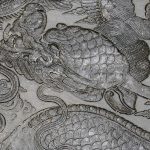There are several must-see locations on this upland. As an illustration, consider “Dam Da,” which is actually a sizable region of pagodas, temples, and caverns, including “Trinh” temple, “Mau” temple, and “Tien” pagoda, all of whose origins are connected to numerous ancient Vietnamese tales. Archaeologists have even discovered evidence of the presence of ancient people in “Tien” and “Ho” caves (Old People Cave – Dong Nguoi Xua). A very beautiful town called “Mai Chau” is where you may unwind and release the stress of the busy city life. Visitors find tranquillity in “Mai Chau”‘s natural setting and surrounding rice fields. The hot spring “Kim Boi” in Hoa Binh is also well-known for its purported ability to treat a variety of ailments, including arm and bone pain. A visit to Hoa Binh is a return to nature that is sure to leave visitors with lifelong memories.
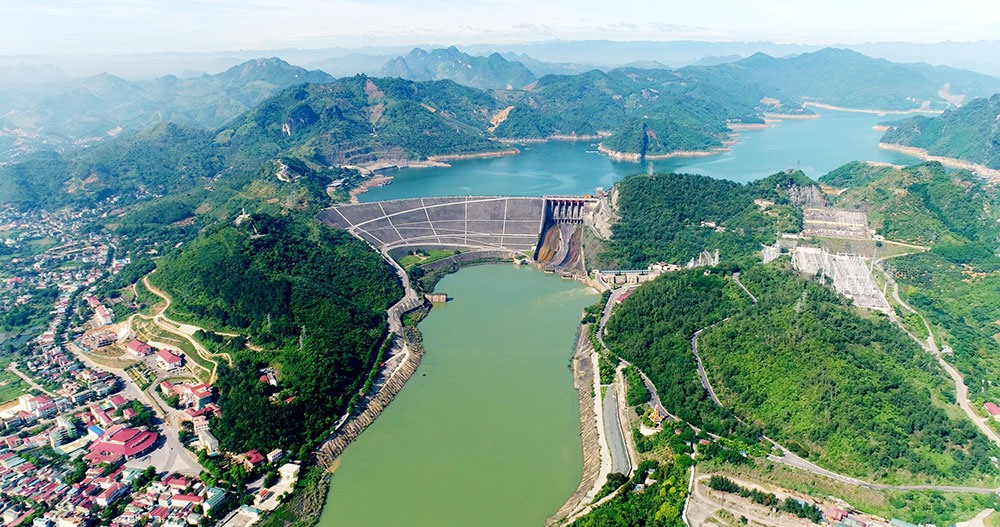
Thung Nai
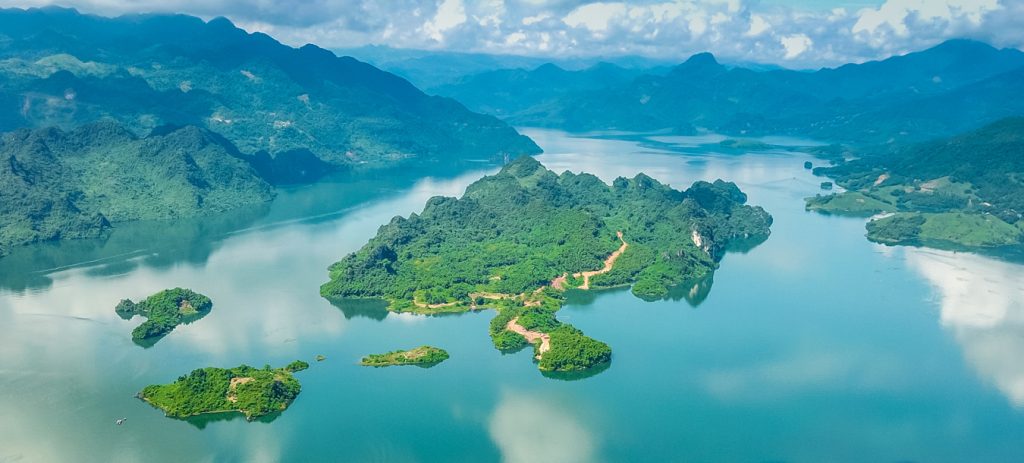
Anyone who visits Thung Nai for the first time is struck by its harmonious composition of mountains, lakes, and charming homes tucked between the tall hills.
Location
Thung Nai is a well-liked getaway spot for higher class Hanoians who have the time and money, and it is situated in the Cao Phong district of Hoa Binh province, just around 110km northeast of the heart of Hanoi.
History
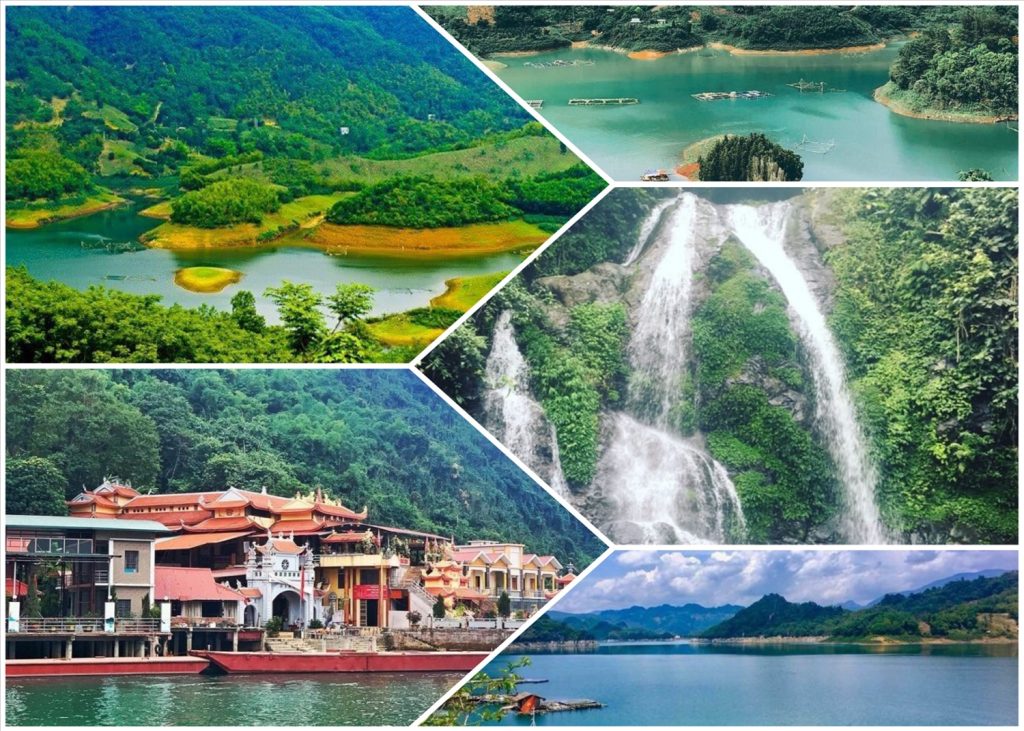
Once upon a time, Thung Nai was a great valley covered by the vast forest, which is home to numerous deer. Hence, the local people call it “Thung Nai” means “the Valley of deer”.
Since the 1980s when the Da River hydropower plant was constructed, Thung Nai has become a huge lake containing the water served for the operation of this hydropower plant. All initial surrounding high mountains become floating green islands and create poetic and magnificent scenery which can enchant any tourist. Thung Nai is called “the second Ha Long Bay on land” in the North of Vietnam (the first position was taken by Tam Coc Bich Dong in Ninh Binh province).
Activities
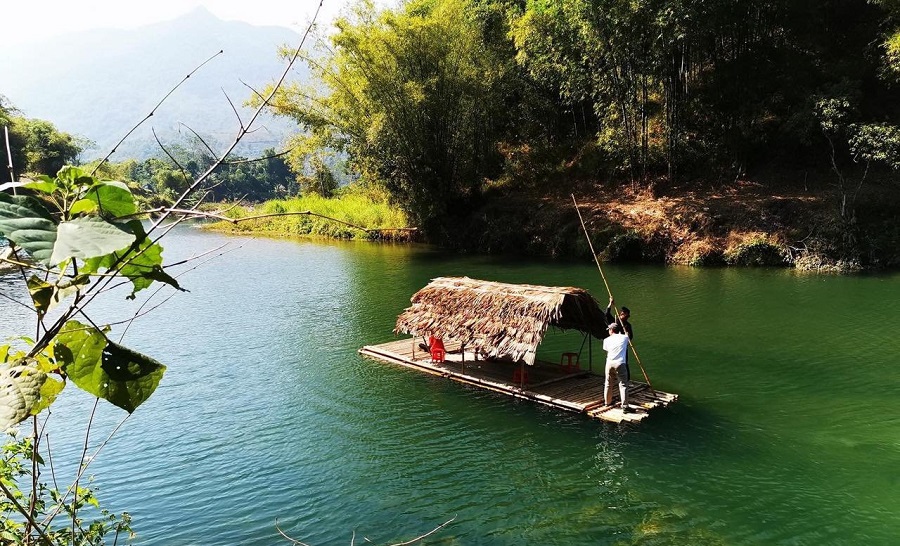
When guests stay at the Windmill, they will be treated to regional specialties including grilled Muong pig, smoked or grilled Da River fish, or fish sour soup, as well as straw wine. After supper, visitors—particularly young people—often congregate in front of the guesthouse for a campfire and to view the shimmering fishing canoe that is afloat in the lake at night.
When visitors awaken in the morning, they can rejuvenate themselves by breathing in the clean air and taking in the beauty of nature. It’s also an excellent idea to take a boat excursion to see the sights around the lake in Thung Nai, such as the Ba Chua Thac Bo temple, the Thac Bo grotto, and the Muong town of Ngoi Hoa. In particular, visitors who are fortunate enough to get here on a Sunday morning can stop by Thac Bo floating market, which is only 20 minutes by boat from the Windmill and where they can purchase fresh fish and shrimp that have been collected locally.
Best Time To Visit
Thung Nai is said to be most beautiful in the autumn, when the water level reaches the highest and the valley is filled with the romantic lake water. Try visiting Thung Nai this time to best enjoy the landscape.
Dam Da
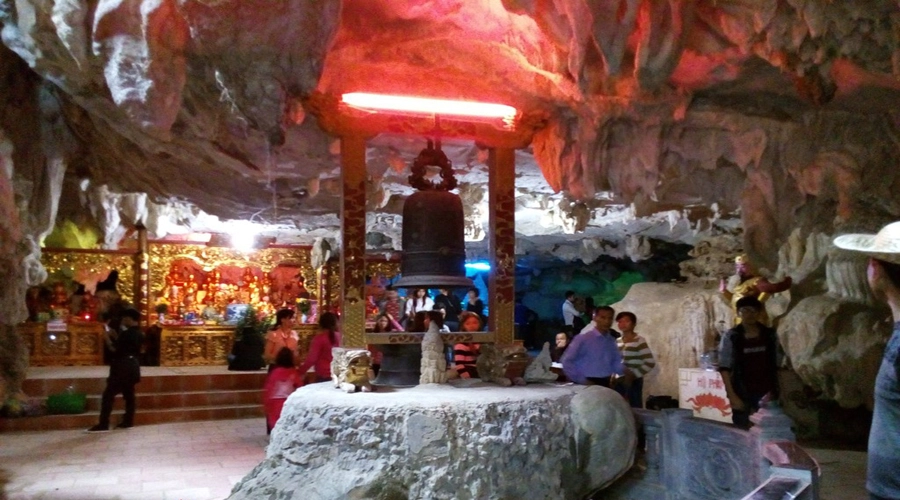
Dam Da is situated in the Lac Thuy district, Phu Lao commune, and Hoa Binh province.
Hoa Tien Cave, Tien Phi Cave, Mai Chau Valley, and Hoa Binh Hydroelectric Dam are all popular tourist destinations, however Dam Da seems to be a lesser-known historical location.
In reality, the Dam Da neighborhood contains a massive complex of temples, pagodas, and caves, including the Trinh temple (also called Quan Trinh), the Mau temple, the Tien pagoda, and others. The pagodas and temples here are intimately associated with historical figures from Viet Nam such as Tam Toa Thanh Mau, Lac Long Quan Father, Hoang Bay Mandarin, and Au Co Mother.
Archaeologists have discovered remnants of ancient civilization in Tien cave and Ho cave (also known as Nguoi xua cave), greatly aiding historical research. Since Tien Pagoda has gained national recognition as a historical cultural site, a lot more people are coming here for tourist and religious purposes.
Dam Da is distinguished by its spectacular natural caverns in addition to its historical and cultural significance. There are many caves, including Tam Toa, Thuy Tien, Cung Tien, Hoang Muoi, and Co Chin. It would be very challenging to list every cave in this area. Tourists will be completely astounded by the enormous and deceptive stalagmites and stalactites when entering each cave.
Dam Da is busiest in the spring, especially during the Chua Tien festival in January and March. Visitors can also easily visit the neighboring Huong pagoda, a well-known landmark in Ha Noi’s My Duc area.
Mai Chau
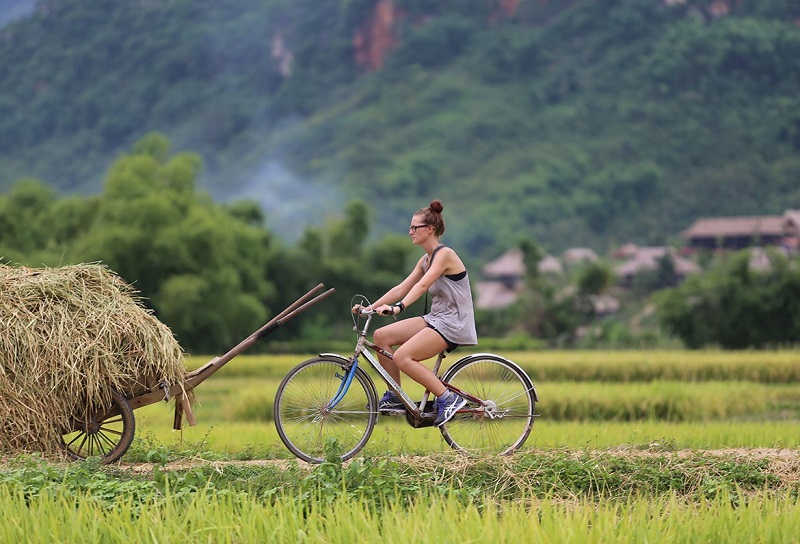
Mai Chau has a dreamy beauty unlike anywhere else. Not flashy with attractions as the neighbor Sapa, the humdrum looking Mai Chau valley has captivated many hearts with the fresh air, diverse cultural identity, and the richness yet serene touch of nature.
Location
It takes around 3–4 hours to go from Hanoi to Mai Chau, which is a portion of Hoa Binh and borders Moc Chau (Son La) and Pu Luong (Thanh Hoa). One of the best areas to visit in Vietnam’s northwest is the mountainous area. Anyone can find calm and learn about a new culture by visiting Mai Chau.
Best time to visit
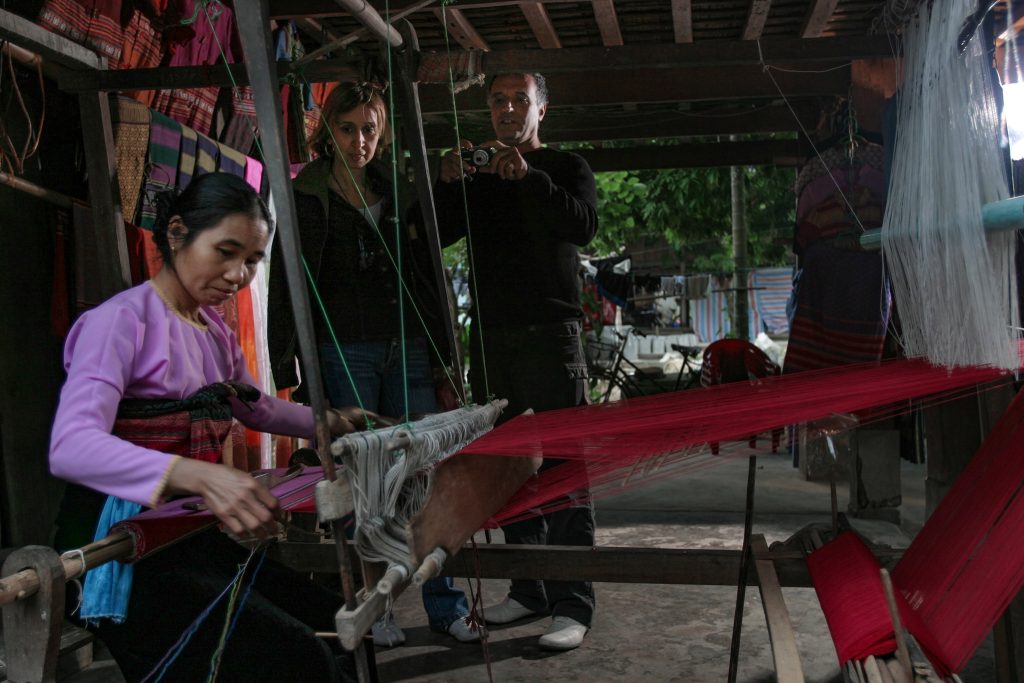
Every season brings ideal beauty to Mai Chau. The valley’s weather is pleasant and ideal for many types of travel because of the mountains and hills that surround it.
The busiest travel season may be in the fall, between September and October, when the entire country is covered in the golden hue of ripe crops. However, other seasons can still be taken into account.
Winter arrives towards the end of December, when Mai Chau bursts into blossom with white plum and mountain ebony flowers.
Mai Chau embraces the new year as soon as spring marches and dissipates the mild cold, and the celebratory mood picks up steam. You should go to the Gong festival of the Muong people, the Long Tong festival of the Tay ethnic group, and the Thai rain festival, among others.
Then the summer arrives and blankets the mountains and rice fields in greenery. Due to the weakened winds, this is also the ideal time for a local bike trip.
Things to do in Mai Chau
Wander around the valley humble villages
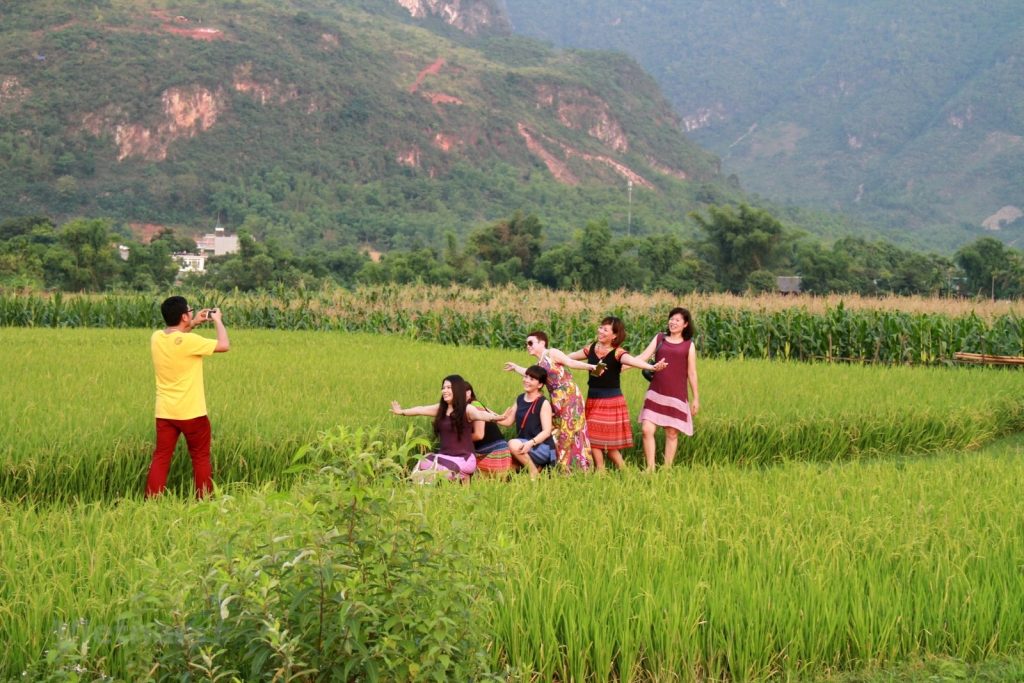
You can start your day early with a pleasant, healthy stride or bicycle ride around Lac village while breathing in the pure mountain air. On the journey, make an effort to steer your wheels toward the nearby Poom Coong village. On the rooftop of one Poom Coong lodging, there is a coffee shop with a sweeping view of the entire hamlet. Come early to see the mist clear, revealing a long row of traditional homes nestled among lush hills and the serene scene of kids playing in their vibrant brocade costumes.
If everything else fails, Mai Chau has created an electric bus system to transport your curiosity to the hidden communities deep within the forest. Plan your vacation to Buoc and Van village instead of the fame-attracted and crowded Lac and Poom Coong village. The two are comparable in terms of rusticity, but the isolated setting may offer greater lyrical potential.
Wandering around the villages is not simply to make the most out of the landscape, you can also learn about the culture of ethnic minorities. Stay at the local houses and do what the locals do, or pay a visit to their handicrafts stalls at the fair markets. And in the evening, take part in campfires and cultural performances held in the center of Lac village, that should wrap one meaningful day.
Peek at nature artworks
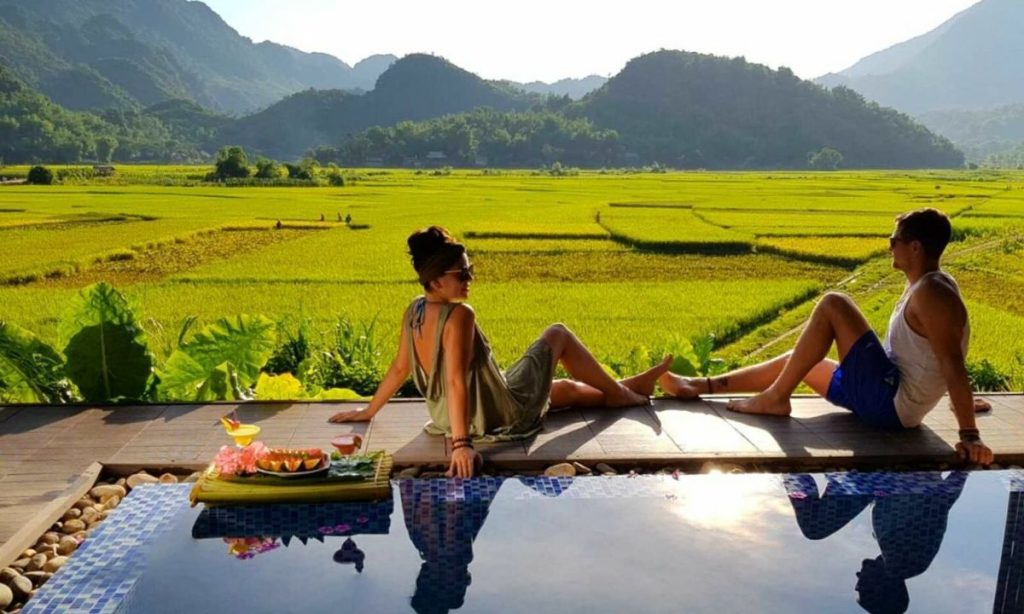
There are a lot of natural caverns and falls in Mai Chau that are both stunning to look at and vast in magnitude.
Visitors are captivated by the enigmatic and enchanting beauty of the Mo Luong and Chieu caverns, which are surrounded by infinite green meadows and limestone blocks. Although the paths leading to these caverns can take a while to complete, they are not particularly challenging. You’ll be rewarded with wonder if you can ascend thousands of rocky stairs.
For a trip to Go Lao waterfall, a pleasant afternoon relaxing experience is guaranteed. Coming to the waterfall cluster, you can enjoy soaking in the cool water, camping next to the splashing flows in a tranquil space, with only the sound of clouds passing by and the birds singing.
Make a trip to the treacherous whitewashed pass
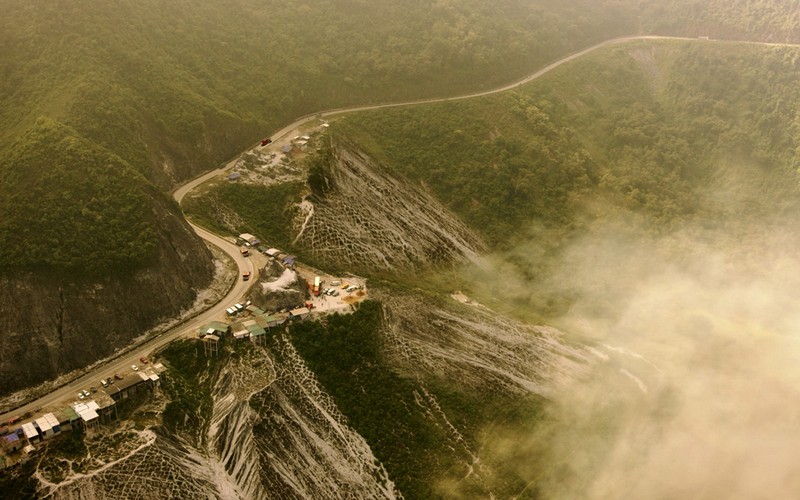
Thung Khe Pass, also known as White Stone Pass by Mai Chau locals, is situated between Tan Lac and Mai Chau on National Highway 6. It serves as a meeting place for those looking for adventure when riding in automobiles. The pass is completely snow-free the entire year and is covered in a pure white coat. The seasons do, however, still change quickly there in a single day. The first half of the day is sunny and bright, while the second is just cold with heavy fog hovering around at eye level, impairing drivers’ vision.
Many travelers’ favorite activity is to ride a motorcycle across the pass. Standing atop the pass, which is 1,000 meters above sea level, rewards the brave with a picturesque view of the entire Mai Chau valley. After winning the battle, refuel with grilled corn, bamboo sticky rice, and a hot cup of green tea at one of the roadside stands.
Try Northwest cuisine
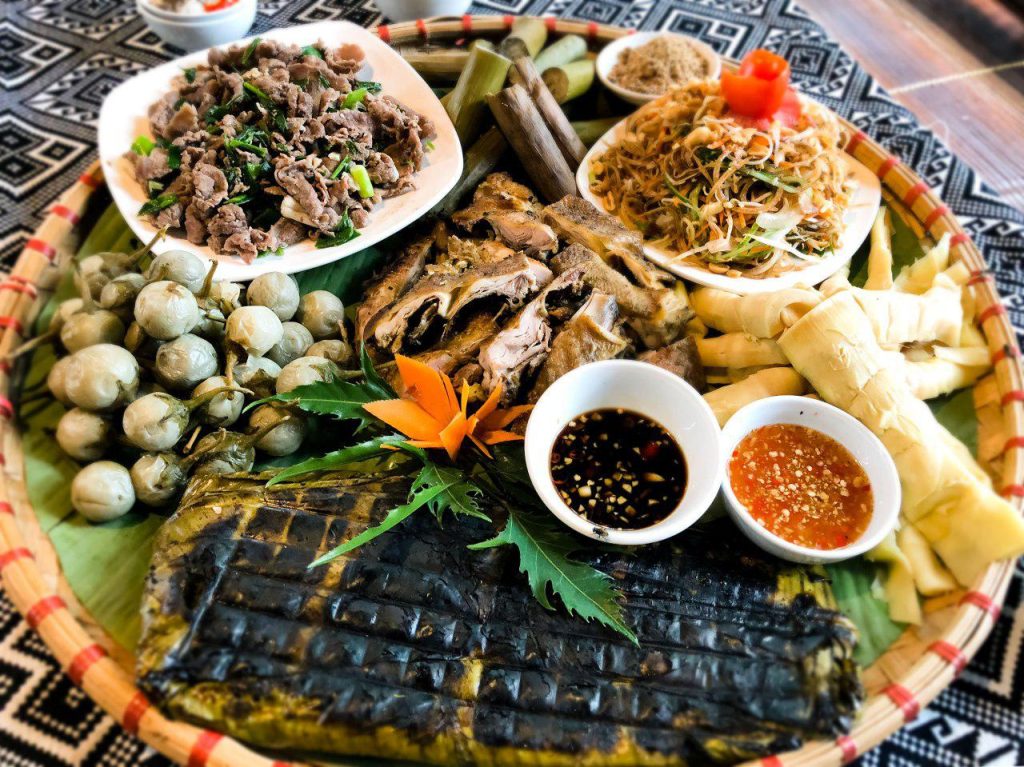
The cuisine of Mai Chau differs significantly from that of the Highlands and is the ideal fusion of Northwest flavor and delta level quintessence. The typical cuisine served in every village in Mai Chau is barbecued pig on a stick. On charcoal, muong bacon will be roasted until the fat is sizzling and the color is changing.
- Boil free range chicken: The chewy and golden boiled chicken serving with Mac Khen salt.
- Mai Chau grilled river fish: the fresh catch fish marinated with lemongrass. The grilling part is the same as anywhere, but the special Mac Khen dipping spice is what makes it unique.
- Com Lam – Bamboo sticky rice: sticky rice mixed with coconut flesh stuffed in a bamboo tube and grilled on charcoal for 2 hours will be the best eating with sesame salt.
- Sour bamboo shoot: the familiar ingredients in Mai Chau people’s courses. The sour taste will awaken the strong flavor of dishes such as stir-fried chicken hearts and fish soup.
Hoa Binh Dam
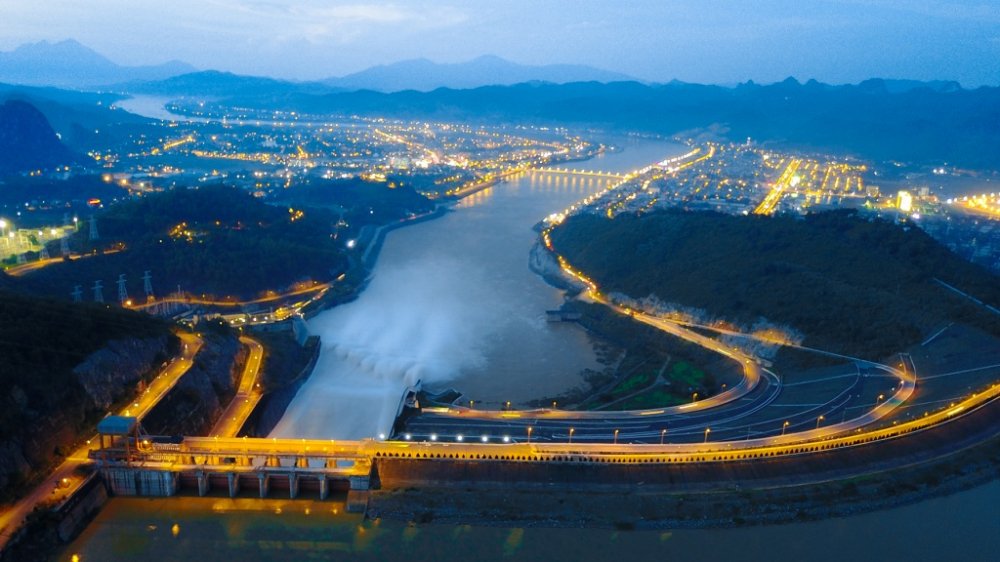
The Hoa Binh Dam, which is used to generate hydroelectric power, is the city’s most well-known landmark.
The rockfill dam took over ten years to build and was finally finished in November 1979. The dam is currently one of Vietnam’s biggest and most significant dams. It is 970 meters long and 128 meters tall. Utilizing a total of eight turbines with a combined capacity of 240 MW, or around 1,920 MW, energy is produced. About 8,160 GWh of power is produced annually. The core of Hoa Binh is cut through by the reservoir that was created when the Da river was dammed. At the dam site, there is currently a monument honoring the 168 construction workers who lost their lives here while building the dam.
The Hoa Binh Dam is essential for the production of energy, irrigation, transportation, and flood control. This building contributes significantly to the nation’s industrialisation and modernization processes. Additionally, it represents the unwavering friendship between the Soviet Union and Vietnam. Additionally, this location is a tourist destination. The majesty and grandeur of the architecture, whose surface area is so vast that it generates an astonishing architectural, cultural, and social complex, draw a sizable number of tourists each year.
Kim Boi Hot Spring
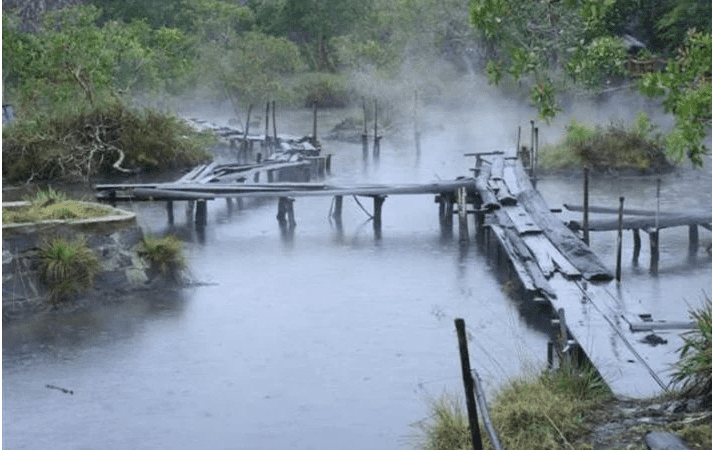
After arduous, lengthy travel, Kim Boi Hot Spring is the ideal destination for people who want to relax for the day.
Visitors may easily reach Ha Bi commune, Kim Boi district, with a 30-kilometer trip from Hoa Binh town. The district is located in a hot spring of a mineral stream and has a surface area of 682 km2.
The fountains continuously spew clear water that is often between 340° and 360° Celsius. The Kim Boi water resources can meet the required quality standard, according to several scientific tests, and are thus appropriate for drinking and swimming. Actually, bottled Kim Boi mineral water is available for rehydration. Its composition is very similar to that of a few well-known international mineral water brands. Additionally, hot water is said to include a high mineral content, such as calcium, lithium, or radium, and be able to hold more dissolved solids. Because of this, this water is valued as a very efficient treatment for conditions like rheumatism, intestinal illnesses, stomachaches, high blood pressure, etc. Even rehabilitation centers for persons with disabilities may find this to be a good site.
Tourists can choose to stay at any hotel in the resort region, depending on their budget. The same thing applies to them wherever they are—they can hear the soothing sound of water shooting out. Not all visitors find it unmemorable to be submerged in Kim Boi stream’s extensive mineral water deposit. No one will undoubtedly object to spending time there!
Tien Phi Cave
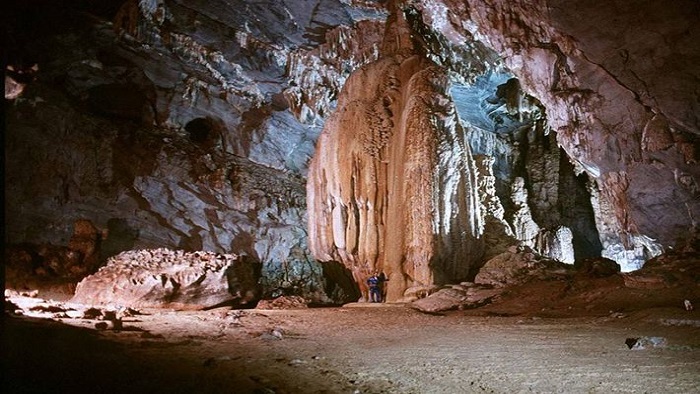
Visitors should never pass up the opportunity to explore Tien Phi cave on their way to Hoa Binh after seeing Hoa Binh Dam.
The cave is located on a hill in Thuc, which is also known as Thung Phi. The entry mouth is somewhat narrow, and there is then a slight slope. The interior of the cave is quite cool and cozy due to the high, dry cave top, which can be seen after another 10 meters of walking. You might become more thrilled as you descend further into the cave. You can still appreciate the stalactites’ illusory sparkling despite the uneven footing. Stalactites protrude in a variety of amusing and vivid shapes, capturing the curiosity of visitors.
More intriguingly, when bright light is shone on those stalactites, they become incredibly magnificent due to natural light coming through the cave’s roof hole. A donation box and an altar for those who want to pray are located directly in the center of the cave. This peaceful setting resembles a sacred and enigmatic castle within the world of carved stones.
You can glimpse a dreamy fairy on an iridescent hammock with hair that falls over her shoulders by moving 10 more meters to your left. Additionally, there are numerous other rocks in the shapes of Buddha, Jesus, a leopard, a lion, and more.
It is here in Tien Phi cave that visitors are exposed to a wide range of fairy tales. Natural masterpieces will definitely make such a good impression on visitors that they should never forget the time in this cave.


